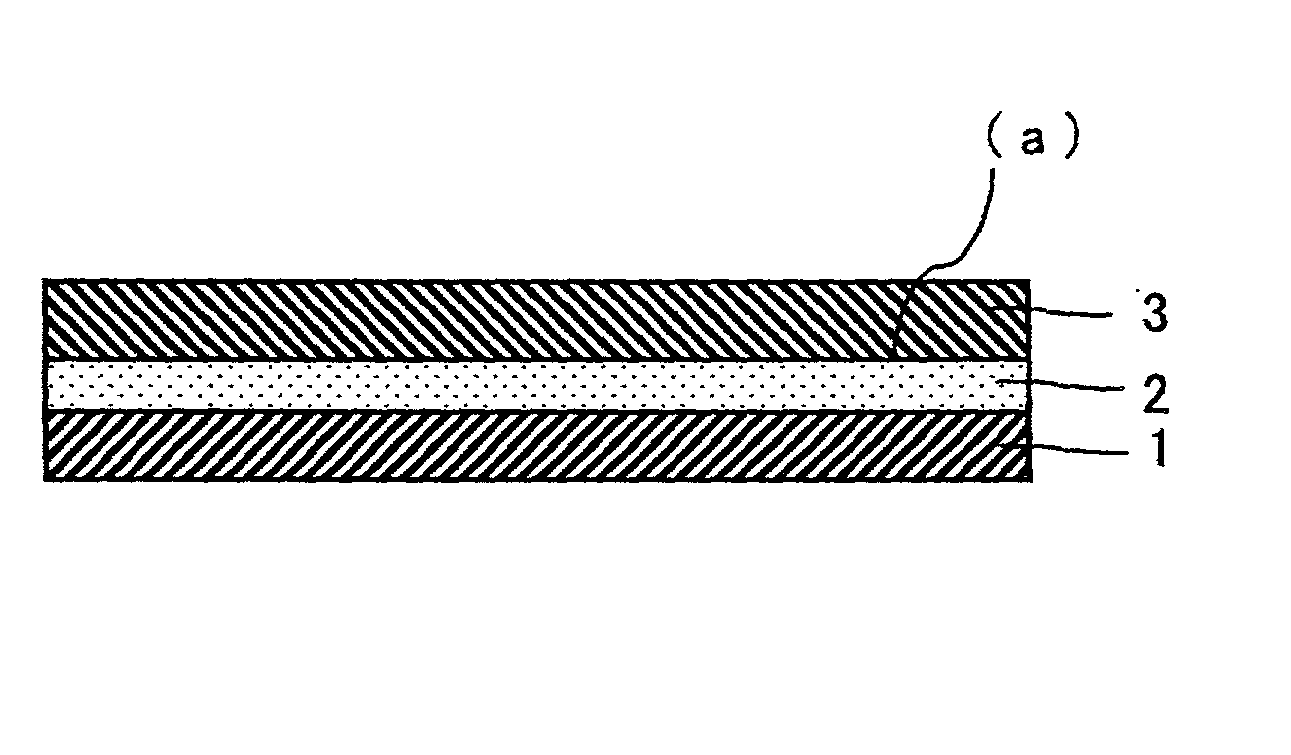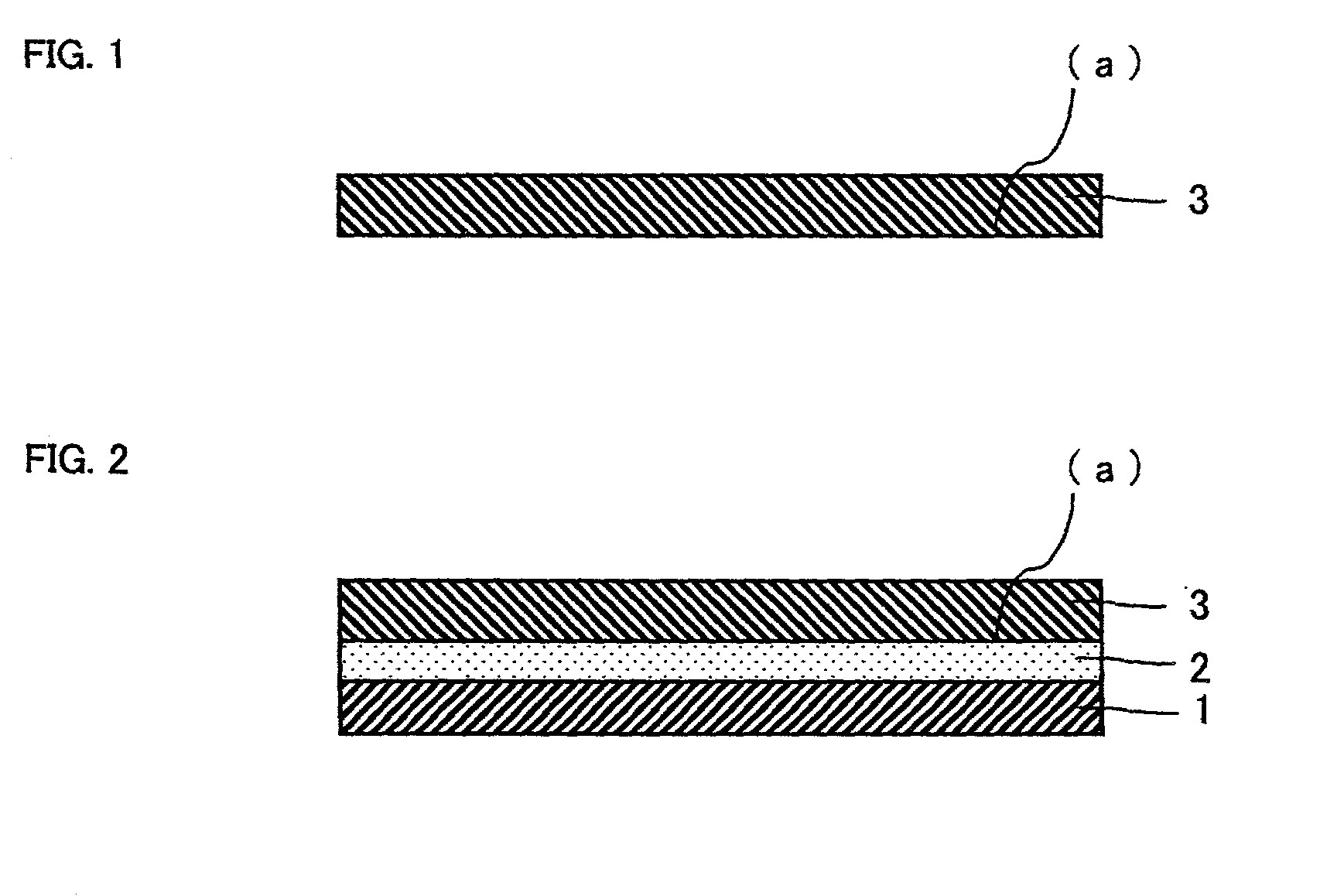Transparent protective film for polarizing plate, process for producing the same, polarizing plate, and optical film and liquid crystal display using polarizing plate
a technology of transparent protective film and which is applied in the direction of optics, polarising elements, instruments, etc., can solve the problems of reducing the concentration of alkali solution, poor adhesion between the triacetylcellulose film used as the transparent protective film and the polyvinyl alcohol derived film used as the polarizer, and breakdown on the facility with large word load
- Summary
- Abstract
- Description
- Claims
- Application Information
AI Technical Summary
Benefits of technology
Problems solved by technology
Method used
Image
Examples
example 1
[0079] (Preparation of a Polarizer)
[0080] A polyvinyl alcohol film of 80 .mu.m in thickness was dying in 0.3% aqueous iodine, stretched 5 times in 4% aqueous boric acid and 2% aqueous potassium iodide, and then dried at 50.degree. C. for 4 minutes to give a polarizer.
[0081] (Preparation of a Transparent Protective Film)
[0082] One side of a triacetyl cellulose film of 80 .mu.m in thickness (referred to hereinafter as TAC film) was irradiated for 10 minutes with UV rays using a 35 W low-pressure mercury lamp. At the irradiation, the distance between the lamp and the TAC film was 55 mm, and the concentration of ozone was 200 ppm.
[0083] (Preparation of Polarizing Plate)
[0084] The UV-irradiated surface of the transparent protective film was coated with a polyvinyl alcohol type adhesive, and the film was laminated via the adhesive on both sides of the polarizer by a roll laminator, and dried at 60.degree. C. for 4 minutes to form polarizing plate. The thickness of the adhesive layer was 0...
example 2
[0085] The polarizer-adhering surface of a transparent protective film was treated in the same manner as in Example 1 except that in (Preparation of a transparent protective film) Example 1, the film was irradiated for 40 seconds with UV rays from a xenon excimer lamp. Using the resultant transparent protective film, polarizing plate was obtained according to (Preparation of polarizing plate) Example 1.
example 3
[0086] (Preparation of a Transparent Protective Film)
[0087] A TAC film of 80 .mu.m in thickness was placed on a cooling board previously cooled at 10.degree. C., and one side of the film was irradiated for 2 minutes with UV rays from a 350 W low-pressure mercury lamp. At the irradiation, the distance between the lamp and the TAC film was 55 mm, and the concentration of ozone was 100 ppm.
[0088] (Preparation of Polarizing Plate)
[0089] Using the resultant transparent protective film, polarizing plate was obtained according to (Preparation of Polarizing plate) Example 1.
PUM
 Login to View More
Login to View More Abstract
Description
Claims
Application Information
 Login to View More
Login to View More - R&D
- Intellectual Property
- Life Sciences
- Materials
- Tech Scout
- Unparalleled Data Quality
- Higher Quality Content
- 60% Fewer Hallucinations
Browse by: Latest US Patents, China's latest patents, Technical Efficacy Thesaurus, Application Domain, Technology Topic, Popular Technical Reports.
© 2025 PatSnap. All rights reserved.Legal|Privacy policy|Modern Slavery Act Transparency Statement|Sitemap|About US| Contact US: help@patsnap.com


